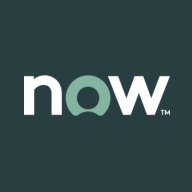

Loom Systems and Elastic Observability are competing in the monitoring solutions category. Elastic Observability holds the advantage with robust features and perceived value for the price, while Loom Systems offers better pricing and customer support.
Features: Loom Systems provides predictive analytics, AI-driven insights, and preemptive problem-solving. Elastic Observability offers comprehensive data analytics, real-time monitoring, and broader analytics insights.
Room for Improvement: Loom Systems could enhance its data analytics depth, expand integration capabilities, and offer more flexible deployment options. Elastic Observability could improve its user interface simplicity, reduce initial setup complexity, and optimize resource allocation efficiency.
Ease of Deployment and Customer Service: Loom Systems has a straightforward deployment process and strong customer support, minimizing setup complexity. Elastic Observability leverages the Elastic Stack for deployment, which may require more initial setup but benefits from flexibility and documentation.
Pricing and ROI: Loom Systems attracts with lower setup costs and faster ROI through simplified operations. Elastic Observability may need higher initial investment but offers value through its depth and scalability.
| Product | Market Share (%) |
|---|---|
| Elastic Observability | 2.9% |
| Loom Systems | 0.3% |
| Other | 96.8% |


| Company Size | Count |
|---|---|
| Small Business | 8 |
| Midsize Enterprise | 4 |
| Large Enterprise | 16 |
Elastic Observability offers a comprehensive suite for log analytics, application performance monitoring, and machine learning. It integrates seamlessly with platforms like Teams and Slack, enhancing data visualization and scalability for real-time insights.
Elastic Observability is designed to support production environments with features like logging, data collection, and infrastructure tracking. Centralized logging and powerful search functionalities make incident response and performance tracking efficient. Elastic APM and Kibana facilitate detailed data visualization, promoting rapid troubleshooting and effective system performance analysis. Integrated services and extensive connectivity options enhance its role in business and technical decision-making by providing actionable data insights.
What are the most important features of Elastic Observability?Elastic Observability is employed across industries for critical operations, such as in finance for transaction monitoring, in healthcare for secure data management, and in technology for optimizing application performance. Its data-driven approach aids efficient event tracing, supporting diverse industry requirements.
We monitor all IT Infrastructure Monitoring reviews to prevent fraudulent reviews and keep review quality high. We do not post reviews by company employees or direct competitors. We validate each review for authenticity via cross-reference with LinkedIn, and personal follow-up with the reviewer when necessary.